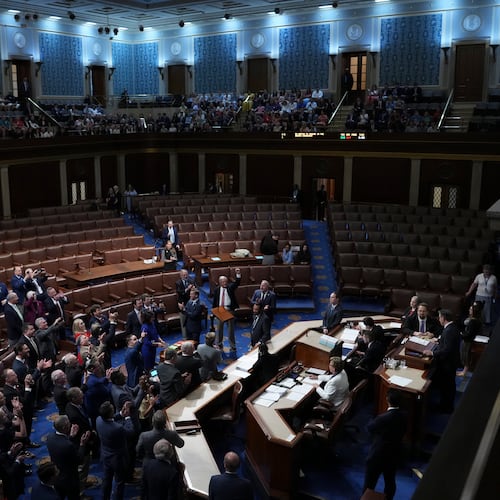The attack ad is the defining feature of present-day elections.
This is no way to run a democracy. We do need candidates to offer competing visions and distinguish themselves from their opponents. But that’s not what attack ads are about. They are about caricature and character assassination. They elevate trivia over policy. They mislead and misinform.
Voters perceive a sharp increase in attack ads. They are right. The reason? A dramatic rise in the amount of election spending by outside organizations, not formally connected to candidate campaigns — a direct result of the U.S. Supreme Court’s misguided 2010 ruling in Citizens United.
It doesn’t have to be this way.
During the 2012 U.S. Senate battle between Democrat Elizabeth Warren and Republican Scott Brown, the two candidates signed the “People’s Pledge” to stem the flow of outside money into that election. Under the terms of the novel agreement, each candidate told outside groups: Stay out. If an outside group purchased any broadcast or online ads, the candidate the ads were designed to help would have to make an offsetting donation to a charity of the opposing candidate’s choice.
The pledge worked. Brown ended up making two small donations, but outside groups stayed out. There was a far lower percentage of negative ads, and the candidates were able to control their message and spend more time talking to voters about issues they cared about.
Although the Massachusetts race was the most expensive U.S. Senate race in history, its character was very different than closely contested races throughout the rest of the country, where outside spending defined the election landscape.
Election spending by outside groups in 2012 began to rival the amount spent by parties. In four of the 10 most expensive U.S. Senate races in 2012, outside groups outspent the candidates, something that has occurred once in the previous three election cycles. Further, outside groups spent 84 percent as much as the national parties in 2012, more than double the percentage in any recent election.
Altogether, outside groups in 2012 spent $1 billion in 2012 on federal elections — exceeding total outside spending for the previous four election cycles combined. The vast majority of this outside spending was devoted to attack ads: More than 85 percent of expenditures made by the 15 largest outside groups in the 2012 election cycle financed negative messages.
This election year is on track to outdistance anything we’ve seen yet. The number of television ads paid for by outside groups is nearly six times what it was at this point in the 2010 midterm election, according to a New York Times analysis.
Candidates have the opportunity to regain control of ads in their election contests through a voluntary agreement to reject outside spending.
Successful candidates in the 2012 Maine U.S. Senate race, 2013 Massachusetts U.S. Senate race, and the 2013 Los Angeles mayoral race proposed rejecting outside spending and gained public support for doing so. There has been prominent public discussion about the idea in 2014 races across the country.
As we approach the intense campaign season, it’s now time for the candidates to negotiate joint agreements to end outside spending. The candidates share our interest as voters in more civil, serious and informative campaigns, where it’s the candidates — not shadowy, unaccountable, outside organizations — who establish the tone and tenor of our elections.
About the Author
Keep Reading
The Latest
Featured


